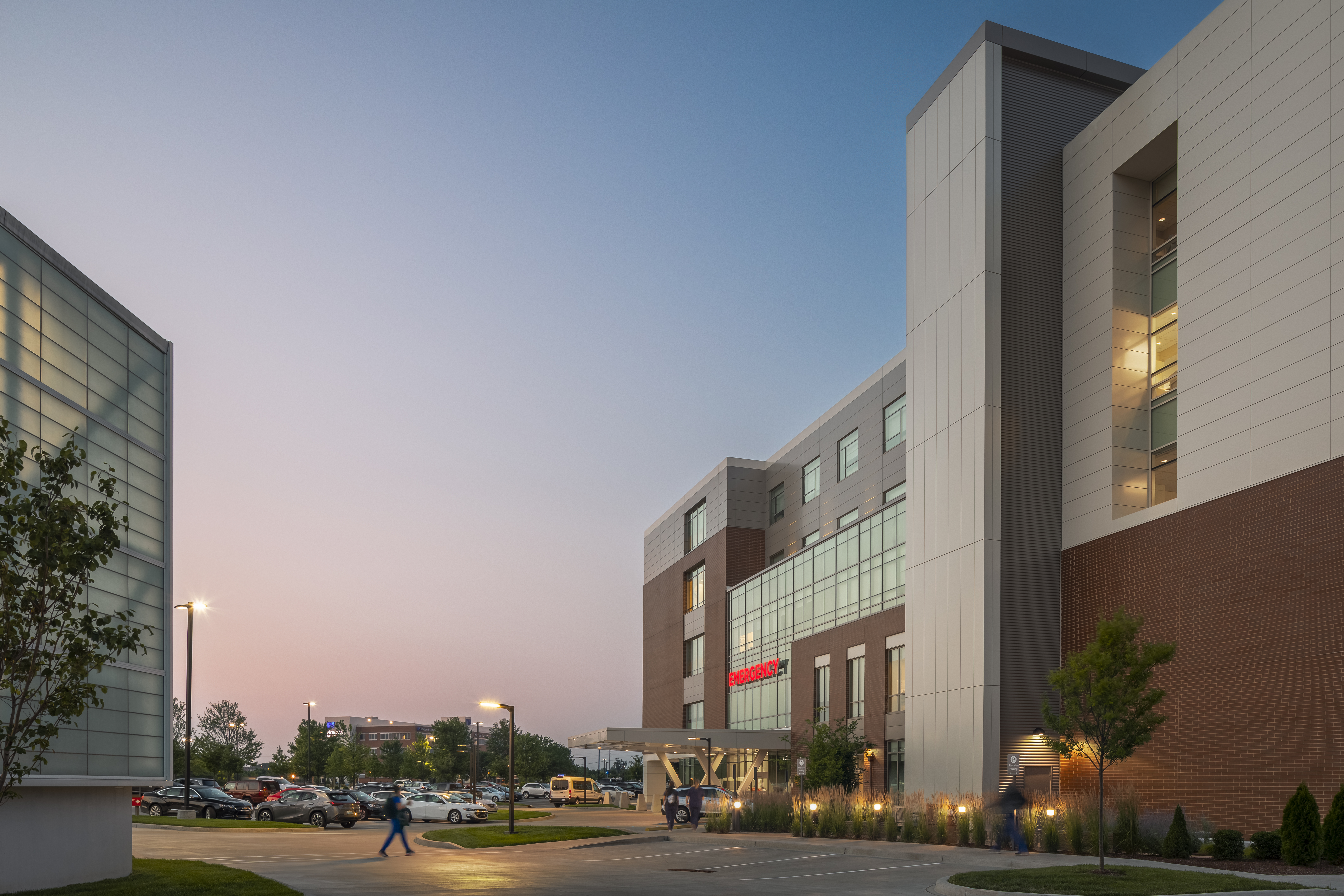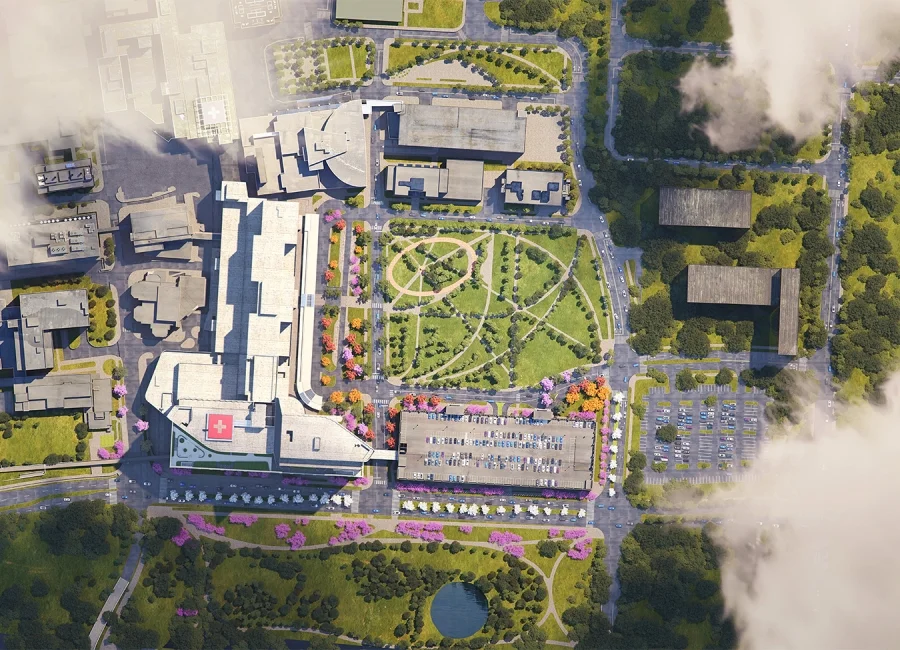How do you elevate a local hospital without losing its special connection to the community? By listening to, and communicating with, community stakeholders.
By Joe Mayer
AIA, NCARB, WELL AP
Principal, Senior Designer
When a hospital aspires to provide expanded, advanced care to a community, among the countless upsides is one risk that’s easy to overlook: losing the comfortable, familiar bond between the facility and the community. That hard-earned trust and connection is a very real consideration we discuss with every project. How do we balance hospital mission and community impact? By never losing sight of the people in that community: how they perceive the project, understanding their needs, and paying attention to the myriad details that affect both.
It’s fair (in fact, a duty) for any growing community healthcare facility to ask serious questions of their design partners. Here are several common ones we hear, and our answers for putting client communities at ease.

How can design influence the “message" an expanded facility sends to its community?
Design should focus on people and their experiences first – patients, staff, visitors, suppliers – and the nuances of each occupant’s needs. No matter the scale of the project, we establish foundational tenets of desired experiences and then balance all other design decisions on that foundation.
Whether the project is multiple buildings or a renovation of one, we clarify if the objective is to change an experience that is not working or if the existing experience is working well and should be maintained. Confirming and respecting this direction is crucial if the existing experience is seen as important and positive to a community. For example, an existing facility may be considered inviting, warm, and comfortable because it has a relatable scale for the community. If that facility is then expanded, special care must be taken to ensure it maintains the ease of experience, inviting design, and human touch points that make the existing environment so welcoming.
Do community members have a role in influencing the building design?
Yes – they should feel valued and heard! Staff, stakeholders, donors, patients, and more have a role in the design process. There are times where this influence can be direct, through participation in design focus groups and community meetings. Indirect sharing can also be valuable, via customer satisfaction surveys, brand/marketing research, and other outreach. No project can reflect every demand of every stakeholder, of course, but this only underscores the need for the design process to build consensus around priorities for the project and clearly communicate how design drivers lead to experiential decisions.
Is it important to explain the need that drives expansion?
Yes, and as early as possible. It’s important to explain why the expense and short-term inconvenience of construction is an investment in serving that community. Take time to explain how the project will reduce the need for local patients to transfer to another facility, allowing them to receive a greater breadth of care in the community-focused hospital they know and love.
In many cases, expansion is being driven by an increased need for inpatient capacity (inpatient beds) and an increased need to serve a higher acuity local population. A more contemporary and expanded ICU, for example, allows backfilling the existing ICU with additional med surg inpatient beds. Additional beds can help meet increasing demand for labor, delivery, and postpartum resources, allowing growing local population to stay closer to home, in a local hospital that’s familiar and comfortable.
What hospital expansions has DesignGroup overseen in recent years?
We’ve worked on hospital expansion projects since the earliest days of our firm 52 years ago. A terrific recent example is the Norton Brownsboro inpatient bed tower, which included a new emergency department and addition of surgery and inpatient beds. Adena Regional Medical Center included multiple expansions designed to maintain continuity of the campus as a familiar destination. And the OSU inpatient tower – included an expansion of James Cancer Center programming – was designed to maintain the familiar trusted brand of the James and provide a consistent, positive experience for patients and staff.



Joe Mayer, AIA, NCARB, WELL AP | Principal, Senior Designer
Joe Mayer leads the firm’s design practices across all markets and regions. He is passionate about fostering cultural and social development through impactful design and believes that great design can be a foundation for a successful community. His efforts enable seamless transitions from initial conceptual design phases to construction documentation through clear communication and an ability to establish and maintain clear project goals.
